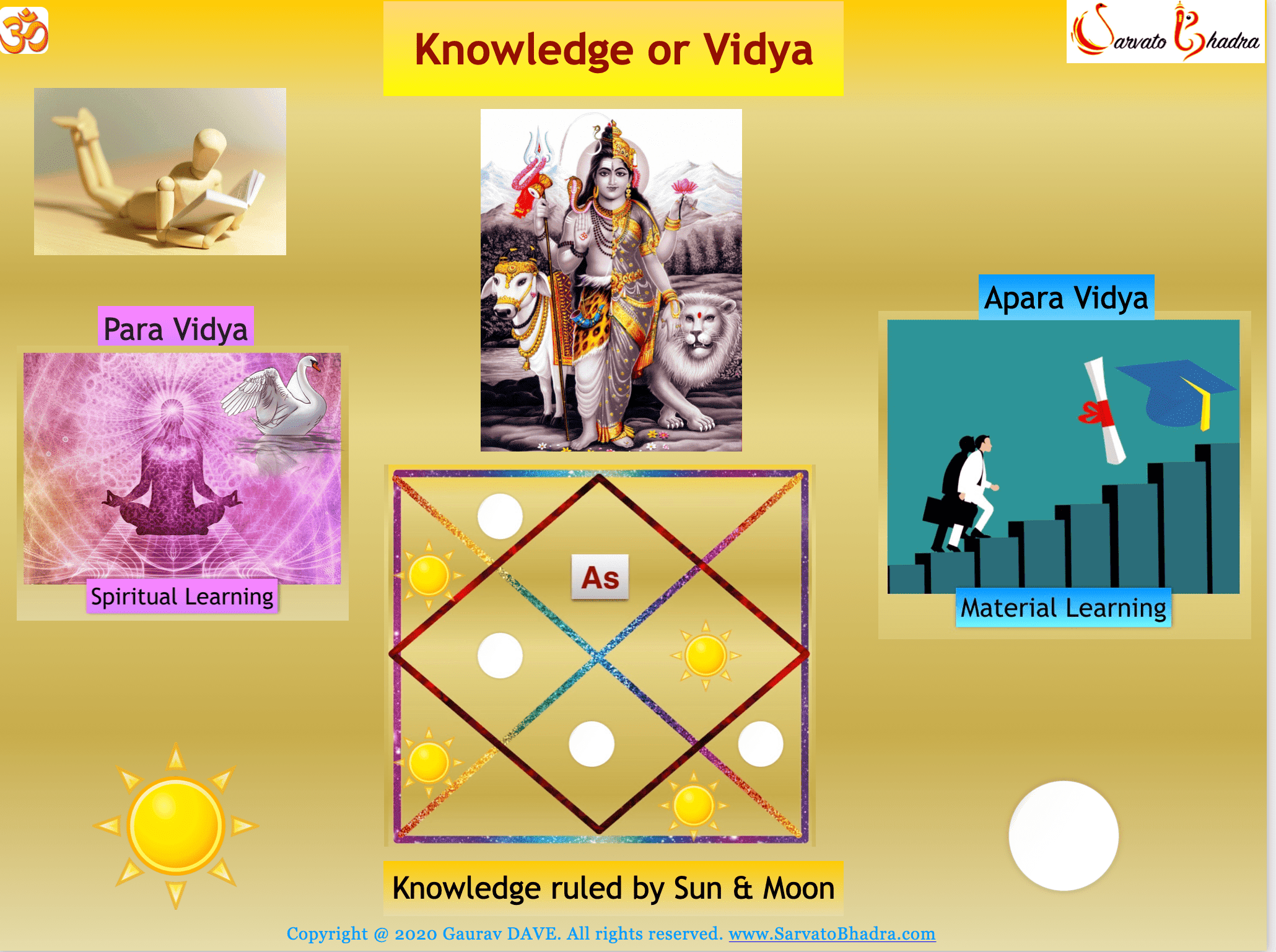The Upanishads refer to two kinds of knowledge: Para Vidya (परा विद्या) and Apara Vidya (अपरा विद्या):
1. Para Vidya (परा विद्या) is higher or supreme knowledge. It focuses on knowing the eternal truth, transcendental knowledge (relating to a spiritual realm), or the learning of the real self (Atman).
The knowledge via which one can identify oneself (the immutable and the imperishable Atma) with the Supreme Soul (Brahman) and shed one’s limited existence or identity. The Supreme Reality is the source of all. Those who gain Paraa Vidya, attain Nirvana, or become liberated consequently need not know anything more.
As per the teachings of the Upanishads, one cannot know the Self by studying scriptures, intellectual subtlety, or extensive learning. The Self is revealed to one who longs to know the Self.”
The knowledge of the Atman is very subtle; it cannot be obtained out of one’s own effort; the Atman cannot be intuitively apprehended by mere intellectual equipment. To understand this and to realize the reality, the aspirant must seek a Guru (a Siddha); who has already realized his identity with the Atman. He/she alone can impart this wisdom through the strength of own power/experiences.
There does exist a definite methodology and tradition for knowing the permanent and imperishable.
Here, not only the very goal of the knowledge is very different, but even the approach and methodology are very different.
The method of self-realization involves Sravan (श्रवण), Manan (मनन ) and Nididhyasana (निदिध्यासन) and not rituals.
The hearing of the secrets of the Upanishads from the Guru to climb up the intellectual ladder is called Shravan (श्रवण) (3rd House). Diksha is the first step involving spiritual cleansing.
Inquiry, deep contemplation of the real significance of this Vakya or Guru Updesh, and developing an unshakeable mental conviction is called Manan (मनन ) (5th house).
The profound and repeated meditation on the Mahavakyas and/or Guru Updesha to realize the identity of Atman and Brahman is called Nididhyasana (निदिध्यासन) (8th house).
All this can be done once, the internal Shuddhi or purity of practitioner, has been established.
Upanishads (Mandukya Upanishad), Aranyakas, Brahma Sutra (ब्रह्म सूत्र) & Bhagwat Gita etc.
2. Apara Vidya (अपरा विद्या): is considered lower knowledge as compared to Paraa Vidya because it is material. It is of the intellect and the senses and comprises all empirical (verifiable by observation or experience) and objective knowledge.
It is, therefore, limited to the finite world. Empirical knowledge presupposes a knower, the things to know, and the act of knowing.
It only helps one to know, live, and do well in Maya. Maya or this world, is actually an illusion or untruth and keeps on changing with time.
In this category comes all our worldly knowledge of science, technology, arts, music, commerce, management, mathematics, geography, history, medicine, languages, astronomy, astrology,
administration, social sciences, sports, etc.
Grossly, the 4 Vedas and the 6 Vedanga also come under this category.
This lower knowledge consists of all textual knowledge: the four Vedas (Rigveda, Yajurveda, Samaveda, and Atharvaveda), the science of pronunciation, the code of rituals, grammar, etymology (study of the history of words), meter, and astrology.
The image attached describes the two kinds of Vidya, or knowledge and the place of our Jyotish.
Read our article on : Philosophy Governing Vedic Astrology
This part of Vedic knowledge is also taught in great detail in our Jyotish course.
One can buy video lessons on Siddhamsa D24 to learn this as well.


